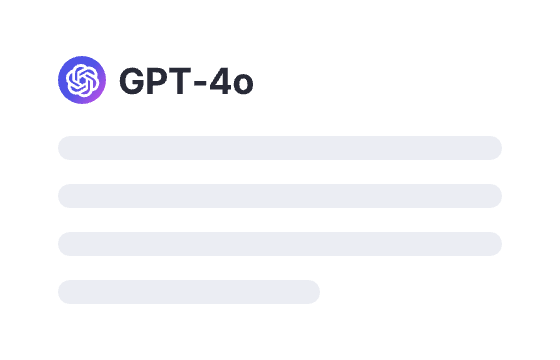131 users had unlocked the prompt
Write a Business Report Template
Elevate your business communication with our customizable report template! Generate professional insights effortlessly and impress stakeholders today!
MidjourneyDall·eStable DiffusionGPTClaudeGeminiChartMarketingIT
Sign in to try online
Prompt
🔒 Log in to see the prompt →
Creating a standard business report template requires understanding the purpose,
audience, and key components that make up an effective report. Consider the
following specifics:
* Purpose of the Report: [Describe the typical purposes your reports serve. Are
they intended for decision making, updating stakeholders, providing an
overview of financial performance, etc.?]
* Target Audience: [Identify who usually reads your reports. Are they senior
management, team members, clients, stakeholders, or others?]
* Frequency of Report: [How often do you typically generate these reports?
Weekly, monthly, quarterly, or for specific events?]
* Key Information to Include: [List the types of information these reports
usually contain. This might include financial data, project progress, sales
figures, market analysis, etc.]
* Visual Data Requirements: [Indicate if you need to include specific types of
visual data, like charts, graphs, or infographics.]
* Preferred Style and Tone: [Describe the style and tone that the report should
convey. Is it formal, conversational, analytical, persuasive, etc.?]
Task Requirements:
1. Design a business report template that aligns with the stated purpose and
target audience.
2. Ensure the template accommodates for the frequency of the report.
3. Include sections that correspond with the key information to be included.
4. Provide brief explanations of what each section should contain.
Best Practices Checklist:
1. The template should have a logical flow, making it easy for the reader to
follow.
2. Each section of the report should be clearly defined.
3. The template should be adaptable for different purposes, as defined by the
user.
4. Include placeholders for visuals like charts or graphs, if relevant to the
type of reports being created.
Deliverable:
Please provide a template for a business report, formatted according to the
specified requirements. Each section should include a brief explanation of the
information it should contain. Format the template in markdown.
Add to Prompt Library
Discover More Prompts

How to Use Prompt?
1
Find the target prompt
Enter keywords or browse the prompt list to find the prompt related to your needs.

2
View prompt details
After registering or logging in (it's free!), view the prompt details, including prompt content, and results.

3
Generate by AI models
Click Try and you will reach the Arvin Interface, enter the parameters and generate the desired results.
